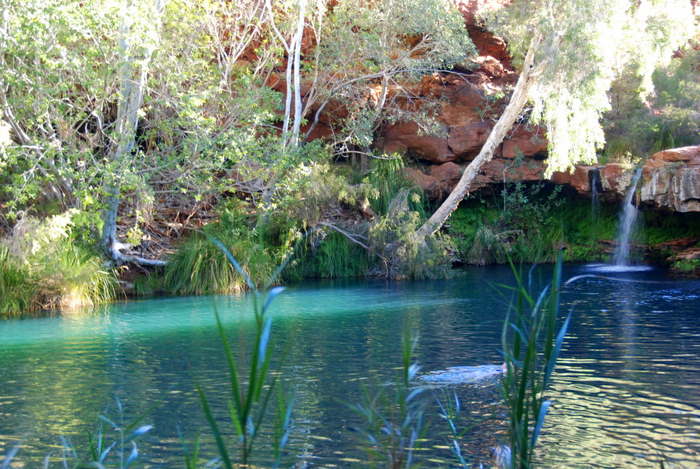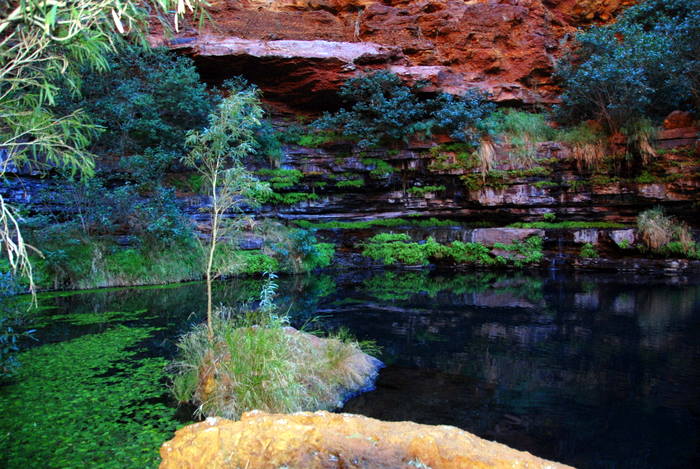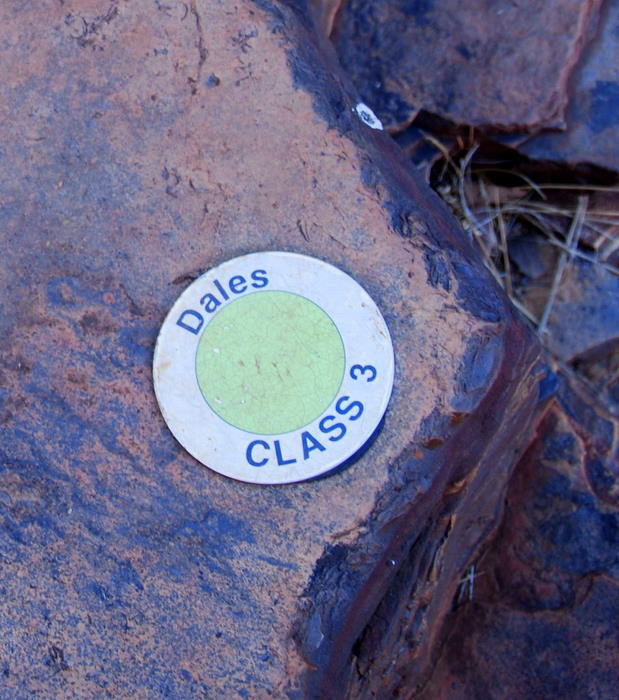The Pilbara is a place where everything is on a giant scale but it also a place of spectacular beauty.
More than a quarter of the world’s known iron reserves are here. The mines are huge and they literally move mountains (Mount Goldsworthy has disappeared). The trains that take the valuable ore to ports are the longest in the world. The ships that transport the ore to its destination are gargantuan as are the ports that handle them. Everything about the Pilbara is big – including the world famous Karijini National Park.
Karijini National Park
Covering 600,000+ hectares, Karijini National Park in the Hamersley Range is Western Australia’s second largest park.
First stop was at the Visitor Centre.
- Visitor Centre
- Inside Karijini Visitor Centre
- Inside Karijini Visitor Centre
Karijini National Park’s climate is tropical semi-desert. A highly variable, mainly summer rainfall of 250–350 mm, often associated with thunderstorms and cyclones, is accompanied by temperatures frequently topping 40ºC.
Its massive mountains, escarpments, gorges, and stony, tree-lined watercourses are more than 2500 million years old. This world class National Park is the most stunning in Australia.
Fortescue Falls
After we had set up camp we walked over to Dales Gorge – about 300 metres away. There was enough daylight to visit Fortescue Falls and Fern Pool. Dales Gorge was named in 1948 after a well sinker who worked on Mulga Downs Station.
- Dales Gorge
- Fortescue Fall Track
- Steps into Dales Gorge near Fortescue Falls
- Near Fortescue Falls
- Fortescue Falls
- At Fortescue Falls
- Fortescue Falls
- Tammy at Fortescue Falls
- Dales Gorge
- From the floor of Dales Gorge
Fern Pool
- Fern Pool
- Fern Pool
- Fern Pool
- Fern Pool
- On the floor of Dales Gorge near Fern Pool
- From our camp
A Walk in Dales Gorge
We started the day with a walk along Dales Gorge. The combined gorge rim walk and walk along the bottom of the gorge takes about two hours. We walked into Circular Pool at the eastern end of Dales Gorge.
- At the bottom of the gorge approaching Circular Pool.
- Track marker
- Heading to Circular Pool.
- Near Circular Pool.
- Near Circular Pool
- At Circular Pool.
- Approaching Circular Pool.
- At Circular Pool.
- At Circular Pool.
- At Circular Pool.
- Approaching Circular Pool
- At Circular Pool.
- At Circular Pool.
- At Circular Pool.
- At Circular Pool.
- Circular Pool
- Circular Pool
- At Circular Pool.
From Circular Pool we set out to walk the floor of the Gorge.
- In Dales Gorge.
- In Dales Gorge.
- In Dales Gorge.
- Tammy in Dales Gorge.
- In Dales Gorge.
- In Dales Gorge.
- Dales Gorge track marker
- In Dales Gorge.
- In Dales Gorge.
- In Dales Gorge.
- In Dales Gorge.
Rim Walk
The Gorge Rim Walk is about two kilometres in length. We did about half it.
- A much photographed Snappy Gum (Eucalyptus leucophloia) on the Gorge Rim Walk.
- Dales Gorge Rim Walk
- Dales Gorge Rim Walk
- Dales Gorge Rim Walk
- Dales Gorge Rim Walk
© Kim Epton 2010-2024
512 words, 55 photographs.
Feel free to use any part of this document but please do the right thing and give attribution to adventures.net.au. It will enhance the SEO of your website/blog and Adventures.
See Terms of Use.























































